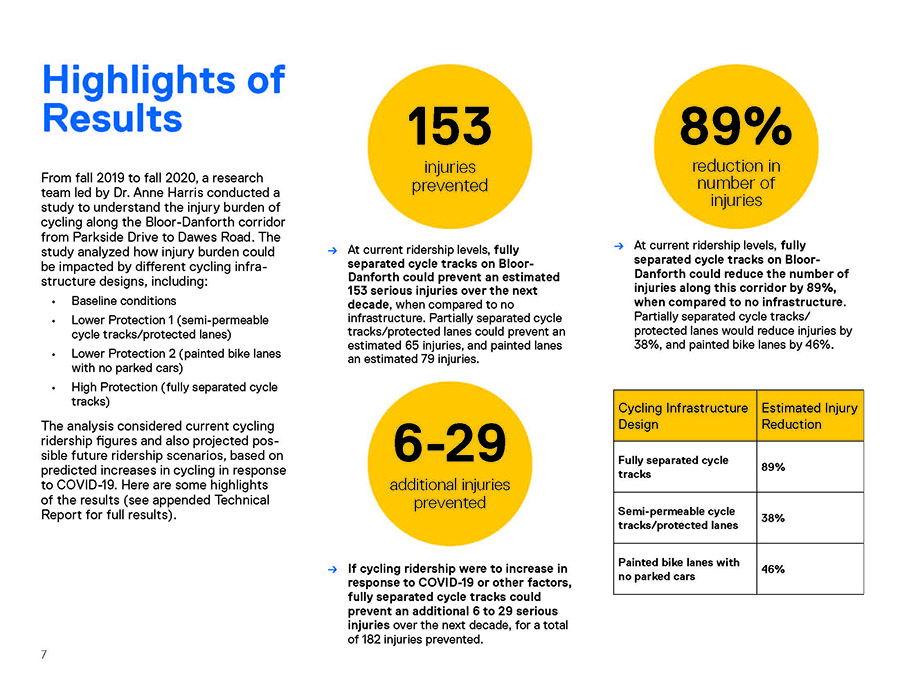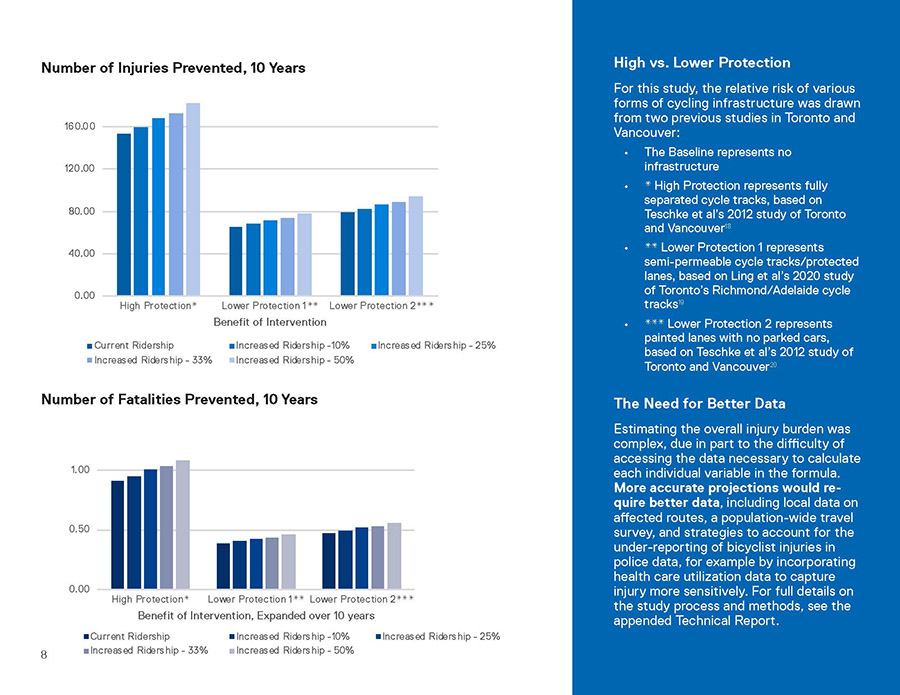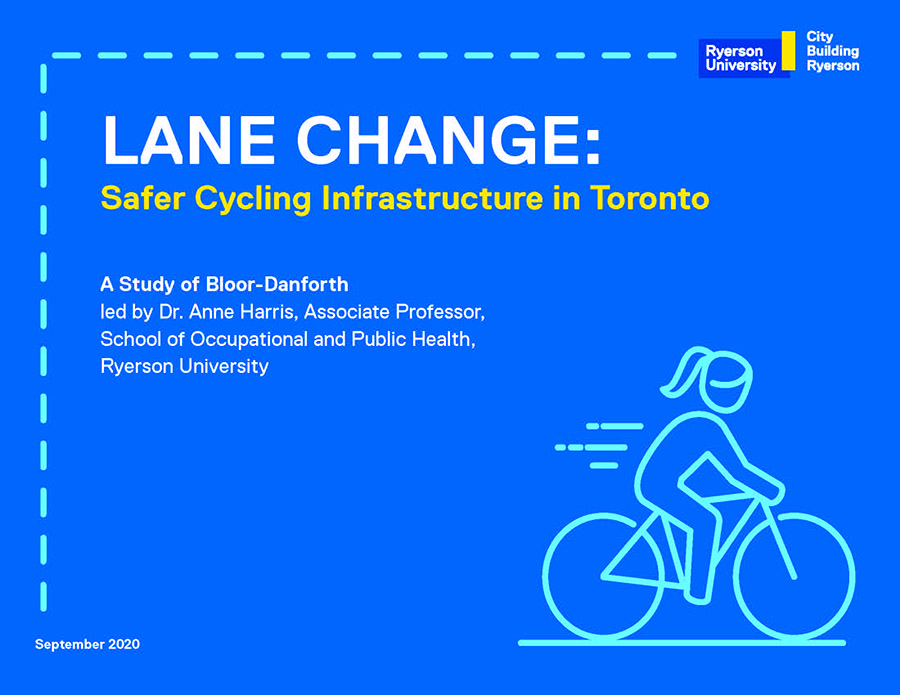Lane Change: New Research on Cycling and Safety
This summer, in an effort to get people moving safely during the ongoing COVID-19 pandemic, the City of Toronto installed 40 km of new (though mostly temporary) cycling infrastructure, including a 15-km continuous corridor along Bloor-Danforth. People are loving the new lanes, with ridership up (external link) and public opinion in favour of further expansion (external link) .
But in the context of a major pandemic, what do these lanes really mean for public health?
City Building Ryerson's new report, titled Lane Change: Safer cycling infrastructure in Toronto, delves into this question. Produced by a team of epidemiologists at Ryerson University, the study quantifies the injury impacts of separated cycling infrastructure along Bloor-Danforth and offers insights to inform the future of ActiveTO and further cycling network expansion.
Led by Ryerson Associate Professor Dr. Anne Harris, the study investigates how different cycling infrastructure designs (cycle tracks, protected lanes, painted lanes and no infrastructure) could impact injuries and fatalities along the Bloor-Danforth corridor from Parkside Drive to Dawes Road. The research, funded by the Metcalf Foundation, carries important implications for the future of the ActiveTO bike lanes on Bloor-Danforth and across the city.
Findings show that permanent, fully separated cycling facilities can do more than facilitate mobility—they can support public health by preventing injuries and fatalities, today in the context of COVID-19 and into the future. Key findings include:
- Fully separated cycling facilities (like cycle tracks) could reduce the number of injuries along Bloor-Danforth by 89%. This could mean 153 to 182 fewer serious injuries over the next decade, depending on ridership
- Fully separated cycle tracks are significantly safer and prevent more injuries than other types of cycling infrastructure, like partially separated lanes and painted lanes
- The availability of safer cycling infrastructure throughout the COVID-19 pandemic could have a "safety in numbers" effect, attracting higher cycling volumes and preventing even more injuries
- Removing temporary cycling infrastructure could have a "bait and switch” effect, actually leading to more injuries; temporary infrastructure attracts new users to the route, but when this protection is removed, the number of injuries could increase from pre-implementation levels
Lane Change summarizes the research findings and highlights key takeaways and policy action items. The report emphasizes the public health benefits of dedicated and protected cycling infrastructure and equips community members with context, evidence and tools to support dialogue, understand neighbourhood impacts and advocate for safer cycling infrastructure across the city.
Readers can also find the research team’s full technical report appended to the Lane Change PDF.


